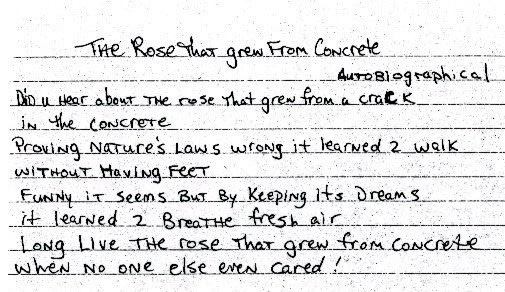Poverty varies from place to place because of cultural and societal norms.
If one would see the poverty in another country, let us say, the Philippines for example.
When comparing the poverty in a third-world country versus a first-world country, the first-world country’s poverty image is not so bad.
The poverty streets of Los Angeles are full of homeless, mentally ill, addicts, and people that just lost everything.
One would rarely see a child sleeping on the streets. That is because, in America, this is considered child abuse.
According to the California Child Protective Services (n.d.),
“If it is determined that a child cannot remain in the home, even with family preservation and support services, then foster placement is arranged in the most family-like setting, that is located close to the parent's home, consistent with the best interests of the child.”
The thing is that poverty in other countries has no such laws. Countless children are subjected to sleeping on the street with their families in other countries.
Some might say that it is the government’s fault. If the United States can take the initiative to make sure a child does not have to live on the street, why is it that other third-world countries cannot?
There are several factors and to be quite honest, we are overpopulated.
The societal acceptance of having sex before marriage generates all these newborns who have to come into a world in which their parents have not yet prepared for them. Poverty ironically breeds even more poverty.
It is like a virus that we cannot find a cure for because there is this “crab mentality.” According to the username mythical89 from Urban Dictionary, crab mentality means, “Analogous to the behavior of a person who diminishes or pulls down anyone else who achieves or is about to achieve success greater than their own.”
What this is explaining is that those who live in poverty deviate from each other. Some of those living in poverty do not want to see others succeed.
According to Kirk (2008), “Thus, tolerance of deviance is influenced by neighborhood conditions and emerges as a property of neighborhoods rather than as a sole attribute of individual residents.”
Ethnographic research (see, e.g., Anderson 1999) provides support for the argument that neighborhoods characterized by concentrated disadvantage and social isolation give rise to cultural adaptations that tolerate or legitimize criminal and violent behavior…”
So, one might as ask the question, what generates wealth; and, how do we equalize income? The answer to the first question, what generates wealth is work.
Whether one is working a nine-to-five job at a marketing agency or is cooking crack cocaine in the kitchen.
Wealth is something we have to take control of because the government has failed us.
Roberson & Azaola (2015) shared a report from the Huffington post that said, “schools that enroll 90% or more nonwhite students spend $773 less per pupil per year than schools that enroll 90% or more white students” (p. 201).
What this tells us is that the stigma of poverty does impact educational achievement.
This data tells us that the government is biased in whom they want to see, succeed.
If they invest more in schools with 90% more white students, then white students will have 90% more opportunities to contribute to the economic development of the community.
However, this advantage does not mean that nonwhite students do not stand a chance at making a difference. They may not have the upper hand, the tools, and the resources, and despite the odds being against them, they still have a chance to make an impact in the world.
The stigma of poverty is nothing but a label. The rapper Tupac Shakur (1971-1996) wrote a poem before he passed away. The poem had its release in 1999 entitled, “The Rose That Grew from Concrete.”
In this poem, Shakur wrote,
“Did you hear about the rose that grew from a crack in the concrete?
Proving nature's laws wrong it learned to walk without having feet.
Funny it seems, but by keeping its dreams, it learned to breathe fresh air. Long live the rose that grew from concrete when no one else even cared” (Shakur, 1999).
It is a potent metaphor that one's circumstances cannot predetermine one's future.
It has a strong emphasis pointing towards those who are living in poverty.
They are trapped under concrete and have a harder time growing, while others are placed in proper conditions and are nurtured and cared for quickly.
His testimony about being the rose that broke through concrete is an abstract idea that gives those living in poverty hope because while every law of nature was against the roses’ growth, yet, it disobeyed.
Now when we speak of poverty in connection with law enforcement, there are many aspects we must view.
According to Roberson & Azaola (2015), “The Hamilton Project noted that youths from low-income families at or below the federal poverty level are equally likely to commit drug-related offenses as their counterpoints in high-income groups” (p. 212).
Keep reading with a 7-day free trial
Subscribe to Diskarte Collective to keep reading this post and get 7 days of free access to the full post archives.





